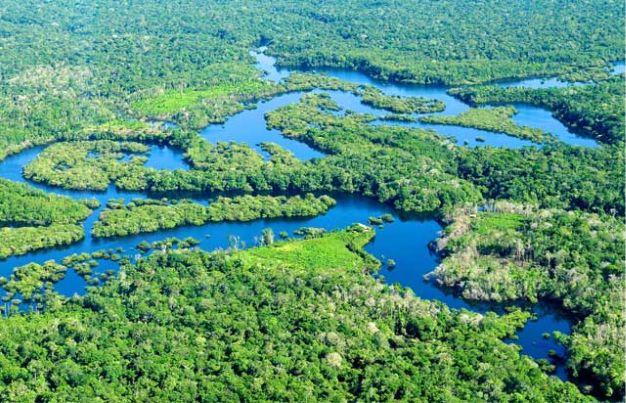If you’ve ever asked yourself, Where do pink dolphins live?, you’re not alone. These elusive, intelligent, and unusually colored mammals—often referred to as Amazon River dolphins or botos—have fascinated biologists, conservationists, and travelers alike. But beyond their rare appearance, pink dolphins inhabit one of the most diverse ecosystems in the world: the Amazon River basin.
In this article, we’ll explore the natural habitat of pink dolphins, answer frequently asked questions about their origin, behavior, and biology, and explain why their environment is crucial for their survival.
Table of Contents
Where Do Pink Dolphins Live?
Primary Habitat: The Amazon River Basin
Pink dolphins primarily live in South America’s Amazon River and its tributaries, including the Orinoco and Madeira Rivers. These freshwater systems stretch across countries like Brazil, Peru, Bolivia, Colombia, and Venezuela. This is why they are often called Amazon River dolphins.
Their habitat includes:
- Flooded forests
- Slow-moving tributaries
- Seasonal wetlands
- Estuaries and oxbow lakes
These ecosystems offer a unique blend of dense vegetation, seasonal floodplains, and abundant freshwater fish, which is the dolphin’s primary food source.
Adaptation to Flooded Forests
During the wet season, water levels in the Amazon can rise over 30 feet, flooding the rainforest. Pink dolphins use their flexible necks and strong flippers to maneuver through submerged trees in search of prey.

Why Are They Called Pink Dolphins?
Although born gray, many Amazon River dolphins develop a pink hue as they age. The exact reason remains under study, but several factors may contribute:
- Capillary concentration near the skin
- Scarring from rough play or mating
- Environmental conditions like water clarity and sunlight
Interestingly, males tend to be pinker than females, possibly as a display trait to attract mates.

Do Pink Dolphins Exist Outside the Amazon?
Many wonder, “Do pink dolphins exist elsewhere?” The answer is—not in the wild. The Inia geoffrensis, or pink river dolphin, is endemic to South America’s freshwater rivers. Unlike marine dolphins, they are not found in oceans or saltwater estuaries.
Some isolated populations exist in the Orinoco River system, but they are still within the Amazonian biome. So, to directly answer “where do pink dolphins live?”—they live only in the freshwater systems of the Amazon and Orinoco Rivers.

The Threatened Habitat of Pink Dolphins
Deforestation and Climate Change
The Amazon rainforest, while vast, is under constant threat due to logging, agriculture, mining, and climate change. These activities:
- Disrupt water cycles
- Pollute rivers
- Fragment dolphin populations
Human Encroachment and Waterway Pollution
Increased boat traffic and hydroelectric dam projects also pose risks. These create noise pollution and block migratory routes, directly impacting where pink dolphins can safely live and reproduce.

Conservation Efforts and Future Outlook
Organizations like the World Wildlife Fund (WWF) and local South American NGOs are working to:
- Create protected freshwater reserves
- Ban harmful fishing practices
- Educate local communities about dolphin conservation
While these initiatives offer hope, pink dolphins remain classified as “Endangered” by the IUCN Red List.
Conclusion: A Fragile Wonder of the Amazon
So, where do pink dolphins live? They thrive in the lush, flooded freshwater ecosystems of the Amazon and Orinoco Rivers. But as human impact continues to threaten these environments, understanding and protecting the pink dolphins’ habitat becomes more urgent than ever.
These animals are not just curiosities of nature—they are barometers of river health, indicators of ecosystem balance, and essential parts of Amazonian biodiversity.
Let’s ensure future generations can still witness the surreal beauty of the pink dolphin gliding through the muddy waters of the Amazon.
Frequently Asked Questions
1. Are pink dolphins dangerous?
No, pink dolphins are not dangerous to humans. In fact, they are known for their curiosity and intelligence. However, like all wild animals, they should be respected and observed from a distance.
2. Why are pink dolphins pink?
Their pink coloration comes from a mix of genetic, environmental, and possibly behavioral factors. Scarring and blood vessel density beneath the skin also influence their hue.
3. Where are pink dolphins found?
They are found in freshwater rivers of South America, especially in the Amazon and Orinoco River systems.
4. How many pink dolphins are left in the world?
It’s estimated that fewer than 50,000 Amazon River dolphins remain in the wild, with numbers declining due to habitat loss, pollution, and fishing conflicts.
5. Why are Amazon River dolphins pink?
The coloration is likely due to capillary-rich skin, environmental conditions, and physical interactions. Males tend to be more pink, possibly for sexual selection.









